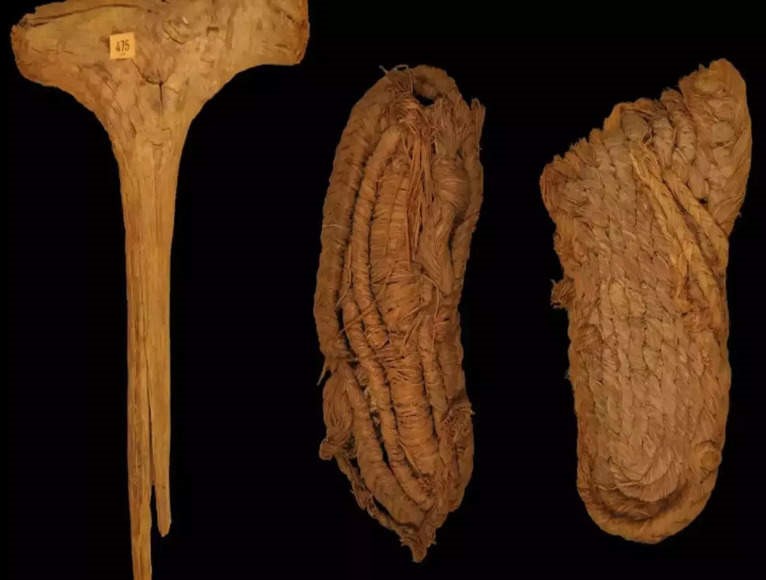More than two pairs of shoes have been discovered in an ancient cave burial site in Spain, along with a collection of wooden tools and some of the earliest examples of pottery preserved in Europe. Although it has been found that humans have been using plants for centuries to create clothing, art tools and other items, their perishable nature has led to many of them being destroyed.
However, some archaeological sites around the world offer special protection conditions that provide insight into the life and culture of our ancestors. One such site is the Cueva de los Murciélagos (Bat Cave) in Albuñol, on the Spanish coast of Granada. Originally discovered by a local landowner in the early 1830s, who mistook guano for valuables, it attracted prospectors in the 1850s. During their exploration, they uncovered a concealed inner cavern housing archaeological remnants and partially mummified corpses.

After that, nearly two hundred years later, scientists used modern dating methods to understand the age of these artifacts and shed light on their creators.
Francisco Martínez-Sevilla, who led the study at the University of Alcalá, said that he studied the materials and technology and produced carbon-14 dating, which showed that everything came from the beginning and in the middle of the Holocene. , between 9,500 and 6,200 years ago.
The new information shows the first evidence of baskets made by the Mesolithic hunter-gatherer communities of southern Europe, as well as many other tools associated with ancient Neolithic agricultural areas, such as shoes and wooden sticks.
At first, it was thought that everything came from the Neolithic period, also known as the New Stone Age, a period characterized by a change in human habitation and other differences from the first hunting and gathering.
However, according to the new research, it is possible that some of these objects, including baskets, were made during the Mesolithic, many centuries earlier.
Martínez-Sevilla added that the new association of esparto baskets from the Cueva de los Murciélagos of Albuñol opens a window of opportunity to understand the last hunter-gatherersocieties of the early Holocene.
Despite these discoveries, there are still many questions about who did these things and what role they may have played in ancient burial practices. For example, some shoes showed signs of wear, while others appeared to have never been used, suggesting that the individuals may have been buried with specific clothing for the afterlife.
Martínez-Sevilla concluded by saying that it is not wrong to say that there are more questions than conclusions, and there is still much to learn to understand the use of caves and lifestyles of prehistoric human communities.


